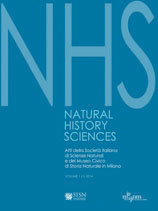The lichen biota of the Special Area of Conservation Rio Pentemina (Ligurian Apennines, N Italy)
All claims expressed in this article are solely those of the authors and do not necessarily represent those of their affiliated organizations, or those of the publisher, the editors and the reviewers. Any product that may be evaluated in this article or claim that may be made by its manufacturer is not guaranteed or endorsed by the publisher.
Accepted: 19 March 2025
Authors
Despite its restricted geographical extent, Liguria hosts a very rich lichen biota. Nevertheless, the lichenological exploration of Liguria remains highly fragmented, both in space and time. Indeed, there are only a handful of comprehensive lichen biota lists for specific areas of Liguria. To address this gap of knowledge and support broader biodiversity, taxonomic, and ecological studies, we present a list of the lichen biota of the Pentemina Valley, which we consider to be one of the most interesting areas in the Ligurian Apennines from a lichenological point of view. The list includes 200 infrageneric taxa, fourteen of which are new to Liguria (e.g., Loxospora elatina). Additionally, fourteen other species of conservation interest have been collected (e.g., Buellia hyperbolica), while many others have been recorded after a century or more since the first and, in some cases, only report (e.g., Ochrolechia szatalaensis or Verrucaria papillosa).
How to Cite

This work is licensed under a Creative Commons Attribution-NonCommercial 4.0 International License.
PAGEPress has chosen to apply the Creative Commons Attribution NonCommercial 4.0 International License (CC BY-NC 4.0) to all manuscripts to be published.










